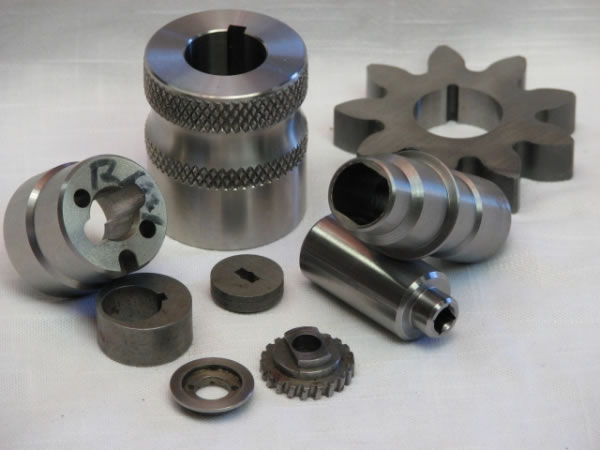Meta Description: Learn the applications of anodized aluminum parts in various industries and why it is a preferred choice for each industry
Anodized aluminum is a popular industrial material because of aluminum and the anodizing process. To aid part manufacturers in using the material, this article discusses why the material is popular and its common application.
Why is Anodized Aluminum Popular?
Anodized aluminum is a popular material industrially and commercially because of its material makeup and the effect the surface finishing process has on the part.
Based on the material, aluminum’s intrinsic properties, like its high strength-to-weight ratio, are responsible for industrial reliance on it. For example, the automotive and aerospace industries consider aluminum anodized parts when looking for materials that can reduce fuel usage and performance efficiency.
Also, for industries that require excellent thermal conductivity, especially in parts that need efficient heat dissipation, such as heat sinks, the materials can form a thin oxide layer on exposure to air and water, protecting the part from corrosion resistance.
Based on the material makeup of anodized aluminum, the properties of aluminum are enough to make it a popular material. However, the anodizing process further improves these properties, which has heightened the use of anodized aluminum parts compared to other surface-finished parts.
For example, anodized aluminum parts are more durable than base aluminum. The process creates a hard oxide layer on the parts, which makes them more resistant to physical wear and abrasion. This oxide also offers superior corrosion resistance compared to the base aluminum due to the reaction of the aluminum anode rod with oxygen from the electrolyte.
Base aluminum has a gray appearance, but with anodizing, it is possible to incorporate a sense of aesthetics. Anodized aluminum has a porous surface, which can adsorb dyes and pigments, allowing access to a wide range of colors.
Additionally, anodizing is a low-maintenance and environmentally friendly process, making it a sought-after method in industries.
Applications of Anodized Aluminum
Anodized aluminum has several applications in different industries for the reasons discussed above. The application of anodized aluminum includes but is not limited to those listed below:
- Construction and Architecture
Anodized aluminum is common in construction and architecture because of its mechanical properties and aesthetic appeal. Its mechanical properties make it suitable for making structural components like beams and trusses, building exteriors like roofing systems and cladding, and decorative elements like railings and handrails.
- Electronics
The electronics industry is another one that uses anodized aluminum. However, it relies on it more for its thermal and electrical properties. Its thermal conductivity, which aids heat dissipation, makes it important to make heat sinks in electronic devices requiring efficient cooling and performance.
In addition, its sleek look and structural properties make it suitable for making protective cases, housing, and panels for electronic components.
- Consumer Goods
Consumer goods are also manufactured using anodized aluminum. Part manufacturers often use the material because of its aesthetic versatility and corrosion resistance. Nevertheless, both are based on the material’s mechanical properties.
For example, anodized aluminum pots and pans are common cookware. Additionally, sporting goods like golf clubs and bicycle frames can be made using anodized aluminum. Lastly, appliances that come in contact with corrosive substances, such as refrigerators, dryers, coffee brewers, and microwave equipment, require a durable and corrosion-resistant material like anodized aluminum.
- Aerospace
The aerospace industry uses anodized aluminum for its high strength-to-weight ratio and corrosion resistance. The industry aims to achieve faster performance, reduced labor costs, and fuel efficiency, so the properties of anodized aluminum make it a top choice.
Anodized aluminum aerospace parts include structural elements like wings, fuselage panels, and landing gear.
- Automotive
Similar to the aerospace industry, the automotive industry relies on anodized aluminum because it is durable and lightweight. This enables faster performance and fuel efficiency.
Applications of anodized aluminum in the industry include making exterior and interior trim and control panels. Also, anodized aluminum heat dissipation properties make it applicable to engine components like pistons, cylinder heads, and intake manifolds.
Advantages of Anodized Aluminum
Many part manufacturer chooses anodized aluminum because of its advantages over base aluminum and other materials:
- Durability
Anodized aluminum is durable, providing a hard, protective layer resistant to scratches, wear, and tear. As a result, parts used in high-traffic areas and applications where long-lasting performance is crucial used anodized aluminum over base aluminum.
- Corrosion Resistance
Base aluminum has natural corrosion, but anodized aluminum has superior corrosion due to the hard anodized coat. Consequently, anodized aluminum has an advantage over base aluminum when exposed to moisture, air, and salt. It will not rust in harsh conditions unless compromised. Also, after being compromised, the base aluminum corrosion resistance is retained.
- Aesthetic Appeal
Anodized aluminum has pores that can adsorb dyes and pigments. Unlike the characteristic color of the base aluminum, anodized aluminum comes in a variety of colors, providing a wide range of aesthetic options for designers and architects. However, sealing is needed to prevent the color from fading.
- Environmentally Friendly
Anodizing is an environmentally safe process, and like base aluminum, anodized aluminum is fully recyclable. The finish does not compromise its recyclability, making it a sustainable choice for various applications.
Conclusion
Anodized aluminum boasts a high strength-to-weight ratio, which is responsible for its industrial application. Compared to base aluminum, it has other properties, such as thermal conductivity and corrosion. This article discussed why the material is popular and its common applications to aid part manufacturers in using it.







